About the author:
Paolo Tozzi, a Master’s in (Hons) Science in Osteopathy at Dresden International University and Bachelor in (Hons) Science in Osteopathy at the European School of Osteopathy and in Bachelor in Science (Hons) Physiotherapy at the Catholic University of Rome is also the Head of Academics Osteopathy at ACS Asomi College of Sciences / Asomi Academy of Osteopathy.
Fascial body network
The whole fascial body network can be intended as a three-dimensional viscoelastic matrix, balanced by an integrated system of compression-tensional forces in dynamic equilibrium (Ingber, 2008). In this vision, bones are the non touching rods that play the role of compression struts, embedded in a continuous connecting system (the tension system), that is the myo-fascia-ligamentous continuum (Levin and Martin, 2012). This exhibits a balanced tension as well as a three-dimensional and dynamic ability to adapt to any force introduced anywhere in the system. Thanks to its hierarchical organization, any applying force can influence any part of the whole, from cellular to the entire body and vice versa, through a non-linear distribution of forces.
Even at a cellular level, fascia displays an interconnected tensegrities arrangement, through an extensively reticular network that is formed by soft tissue fibroblasts, via their cytoplasmic expansions permeating all body (Langevin et al., 2004). Furthermore, each fibroblast’s cytoskeleton is structurally connected to the external environment, either directly with contiguous cells or through the extracellular matrix (ECM) constituents (Fletcher and Mullins, 2010). The entirety of this system may indeed represent a body-wide signaling network (Langevin, 2006), expressing through the interdependence between cells and the surrounding matrix. Signals from the ECM are transferred through transmembrane mechanoreceptors to the cell nuclei while being transduced into chemical information, so playing an impact on various aspects of cell behavior and metabolism via modulation of gene expression (Wang et al., 2009).

The fasciagenic unifying theory
Fascia appears to respond to various physical and chemical forces, as a single structural continuum interacting with a multitude of regulatory functional properties. In health as well as in disease, it plays different roles, such as those related to joint stability, general movement coordination, gross and fine movement control, transmission and distribution of mechanical forces; bodywide proprioception, nociception and autonomic activity, constantly interacting with the central nervous system, cortical organization, including cognitive and affective components; hydraulic pumping and fluids flow; piezoelectricity and other forms of energy transmission; diffusion of various chemicals and nutrients; immune, hormonal, cellular, genetic and epigenetic responses, together with a potential role in many connective tissue pathologies, wound healing and tissue repair (Tozzi, 2014). Such a multi-potential system provides the anatomical and physiological basis for a fasciagenic unifying theory on the different mechanisms underlying body function and dysfunction.
In other words
This network may certainly represent a bodywide sensory organ (Schleip et al., 2014), and even more, a meta-system (Langevin, 2006) that coherently influences the structure and function of the whole organism and the interaction between its constituents. Its vital function is so crucial that “by its action, we live and by its failure, we shrink, or swell and die” (Still, 1899).
References
- Benjamin, M., 2009. The fascia of the limbs and back–a review. J. Anat. 214(1):1-18.
- Blechschmidt, E., Gasser, RF., 2012. Biokinetics and biodynamics of human differentiation: principles and applications. North Atlantic Books, Berkeley.
- Fletcher, DA,, Mullins, RD., 2010. Cell mechanics and the cytoskeleton. Nature 28;463(7280):485-92.
- Guimbertau, JC. 2012. [Is the multifibrillar system the structuring architecture of the extracellular matrix?]. [Article in French]. Ann. Chir. Plast. Esthet. 57(5):502-6.
- Ingber, DE., 2008. Tensegrity and mechanotransduction. J. Bodyw. Mov. Ther. 12(3):198-200.
- Langevin, HM., Cornbrooks, CJ., Taatjes, DJ., 2004. Fibroblasts form a body-wide cellular network. Histochem. Cell Biol. 122(1):7-15.
- Langevin, HM., 2006. Connective tissue: a body-wide signalling network? Med. Hypotheses 66(6):1074-7.
- Levin, S., Martin, D., 2012. Biotensegrity the mechanics of fascia. In: Schleip, R., Findley, T., Chaitow, L., Huijing, P. (Eds.), Fascia: the tensional network of the human body. Churchill Livingstone, Elsevier, Edinburgh. pp. 137-42.
- Schleip, R., Mechsner, F., Zorn, A., et al., 2014. The bodywide fascial network as a sensory organ for haptic perception. J. Mot. Behav. 46(3):191-3.
- Stecco, C., 2014. Why are there so many discussions about the nomenclature of fasciae? J. Bodyw. Mov. Ther. 18(3):441-2.
- Still, AT., 1899. Philosophy of Osteopathy. A.T. Still, Kirksville, MO. 164.
- Tozzi, P., 2014. A fasciagenic model of somatic dysfunction – underlying mechanisms and treatment – A unifying model. J. Bodyw. Mov. Ther. under revision.
- Valero-Cuevas, FJ.,Yi, JW., Brown, D., et al. 2007. The tendon network of the fingers performs anatomical computation at a macroscopic scale. IEEE Trans. Biomed. Eng. 54(6 Pt 2):1161-6.
- Van der Wal, J., 2014. The fascia as the organ of innerness – An holistic approach based upon a phenomenological embryology und morphology. In: Torsten, L., Tozzi, P., Chila, A. (Eds.), Fascia in the osteopathic field. Handspring Publishing, Edinburgh. In preparation.
- Van der Wal, J., 2009. The architecture of the connective tissue in the musculoskeletal system-an often overlooked functional parameter as to proprioception in the locomotor apparatus. Int. J. Ther. Massage Bodywork. 7;2(4):9-23.
- Varela, FJ., Frenk, S., 1987. The organ of form: towards a theory of biological shape. J. Soc. Biol. Struct. 10(1):73-83.
- Wang, N., Tytell, JD., Ingber, DE., 2009. Mechanotransduction at a distance: mechanically coupling the extracellular matrix with the nucleus. Nat. Rev. Mol. Cell Biol. 10(1):75-82.
- Willard, FH., 1997. The muscular, ligamentous and neural structure of the low back and its relation to back pain. In: Vleeming, A., Mooney, V., Snijders, CJ., et al. (Eds), Movement, stability and low back pain: the essential role of the pelvis. Churchill Livingstone, Edinburgh.
- Wood Jones, F., 1944. Structure and function as seen in the foot. Baillière, Tindall and Cox, London.




